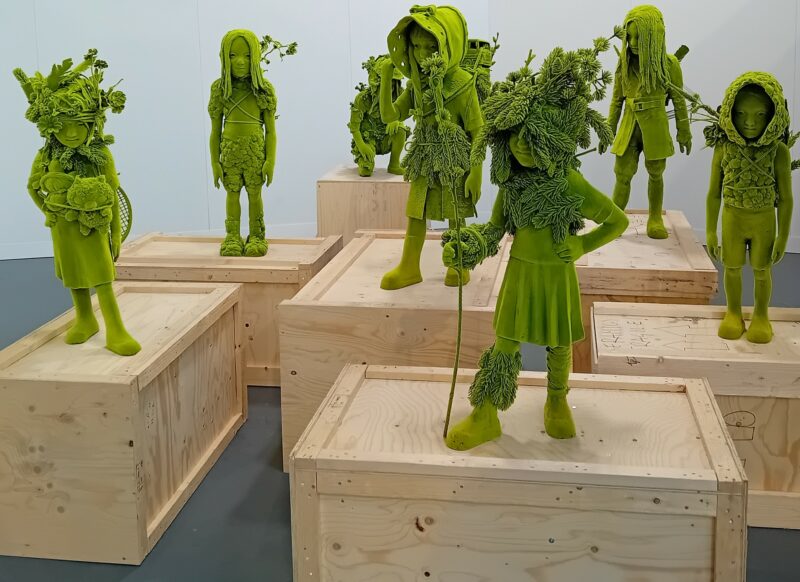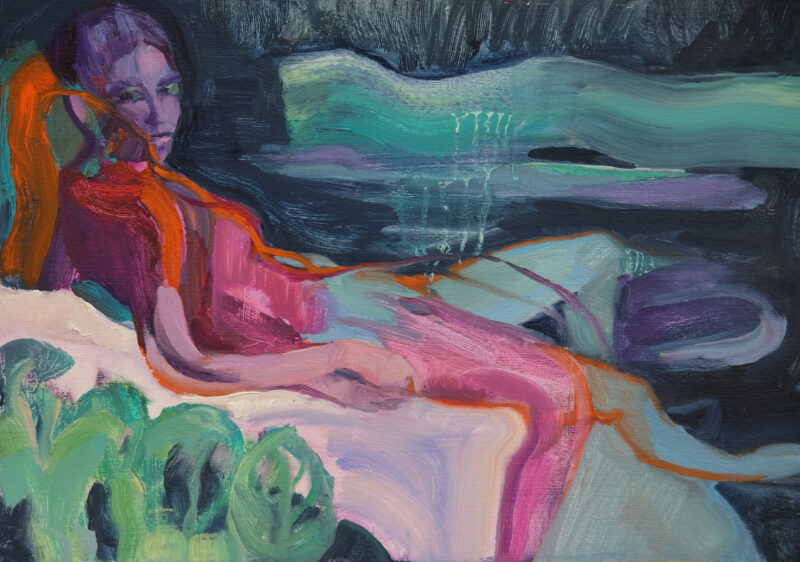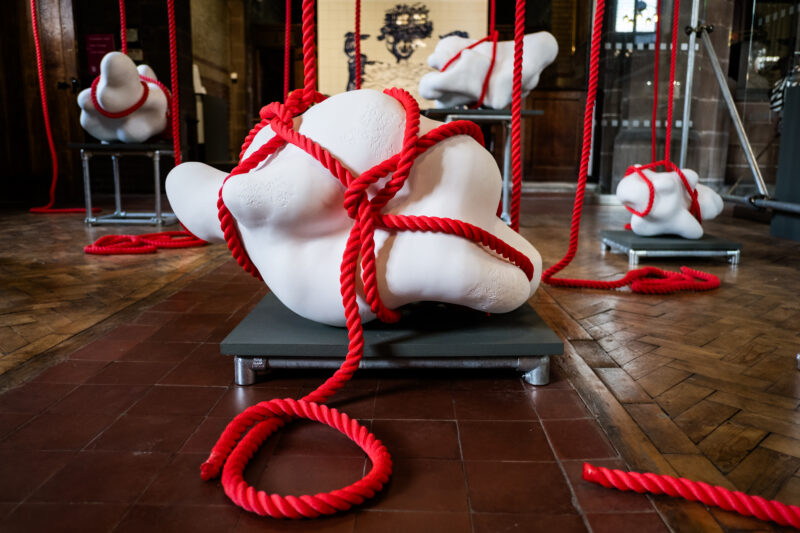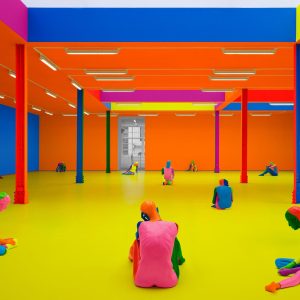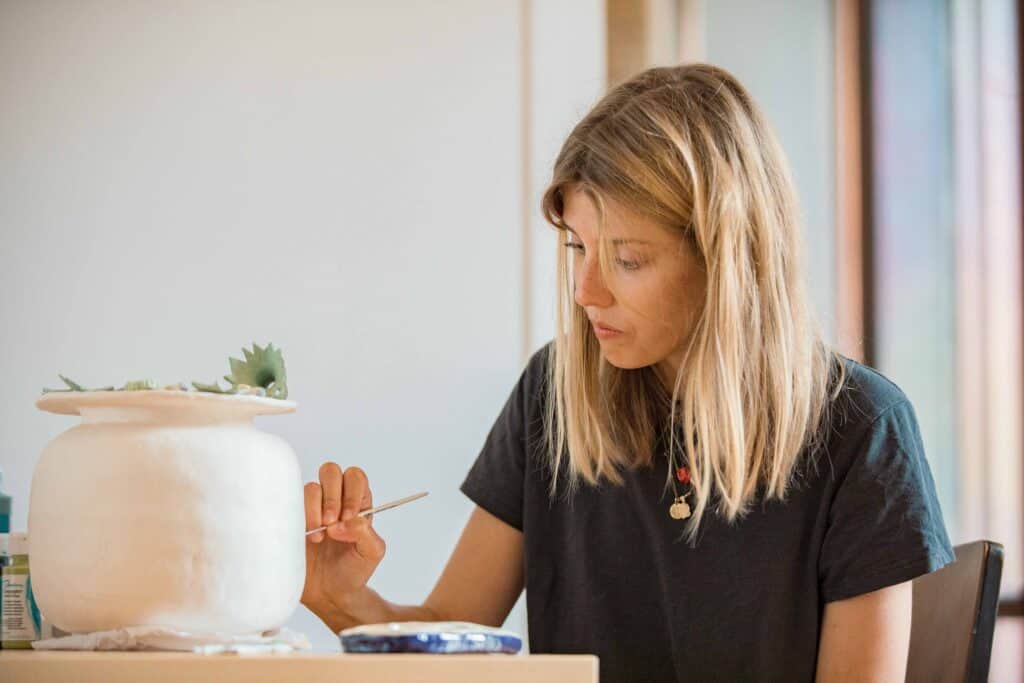
Katy Stubbs searched and explored various mediums before moving to ceramics. The non restrictive and malleable ability of clay could fully capture her sense of dimension, her love of art history, storytelling, and her wicked sense of humor.
Stubbs’ ceramics are energetically engaging due to the juxtaposition of a highly polished handmade quality object accompanied by the scenes depicted within them. The works are hilariously deceptive. Upon closer inspection there are images that are innocently (and not so innocently) erocitic, scenes that allude to signs of decay and gluttony, and actions that are outright murderous. All of which are beautifully crafted and illustrated and leave the viewer slightly uneasy, curious of the circumstances, and at times strangely peckish.
Stubbs is based in London and draws inspiration from the strangeness in life that is people and nature. Whether taken from direct observations or something that she tuned into, Stubbs is capturing what people mentally and physically gravitate towards, what they consume, and the possible ramifications of these actions. Nature is seen through reimagination of flowers, weeds, insects, and animals. They are expressed in various forms such as flourishing in their environment, investigating one another, paired with a meal, or dead on display.
The objects and scenes in Stubbs’ work are identifiable and personable because of their resemblance to everyday items, examinations, desires, and vices, which make the work seamlessly approachable.
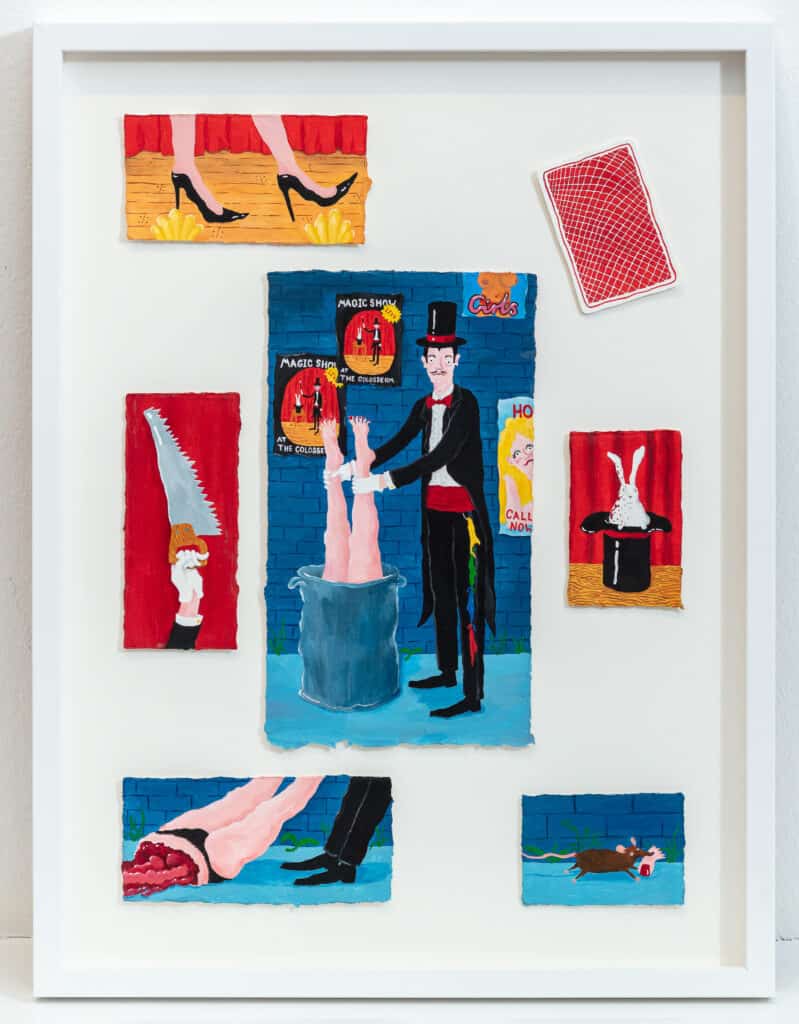
Phillip Edward Spradley: You primarily work in clay, but you’re skilled with a pen and pencil. Ceramic thoughts manifest within your sketchbook, and these preliminary sketches are artworks on their own, and that’s because at your core you are an illustrator. You have made some outrageous comics and characters. What drove you to communicate in this fashion? Were fairy tales and comics prominent growing up? Do you take part in them now for inspiration?
Katy Stubbs: I have taken a huge amount of inspiration from comics and graphic novels. The combination of ‘image words,’ especially the funny sound words like ‘thump’ and ‘yoink,’ makes telling a story fun. It lets me be a movie director. In my head scenes play out in action and I have to think how to break them up and what details to focus on and what different objects say. That’s where my sketchbook plays a massive role in plotting and planning.
Recently, I made a pot telling the story of a magician who murders a woman because she wouldn’t love him back. The fun part of telling a story like this is that it’s relatively simple in plot but it leaves so much room for embellishment. I love magician paraphernalia because it gives me that funny feeling from being a child of being scared but also a bit sick with excitement.
Sometimes, a whole story will come from one image in my head. With that one I imagined a magician wrapping up a dead dove in newspaper wearing his gloves. For another one of my comics it was the image of a man kissing a dolphin with a cold sore at sea world.
I imagine Edward Gorey delighted in thinking up different ways for children to die. I also enjoy the power that telling stories gives me.
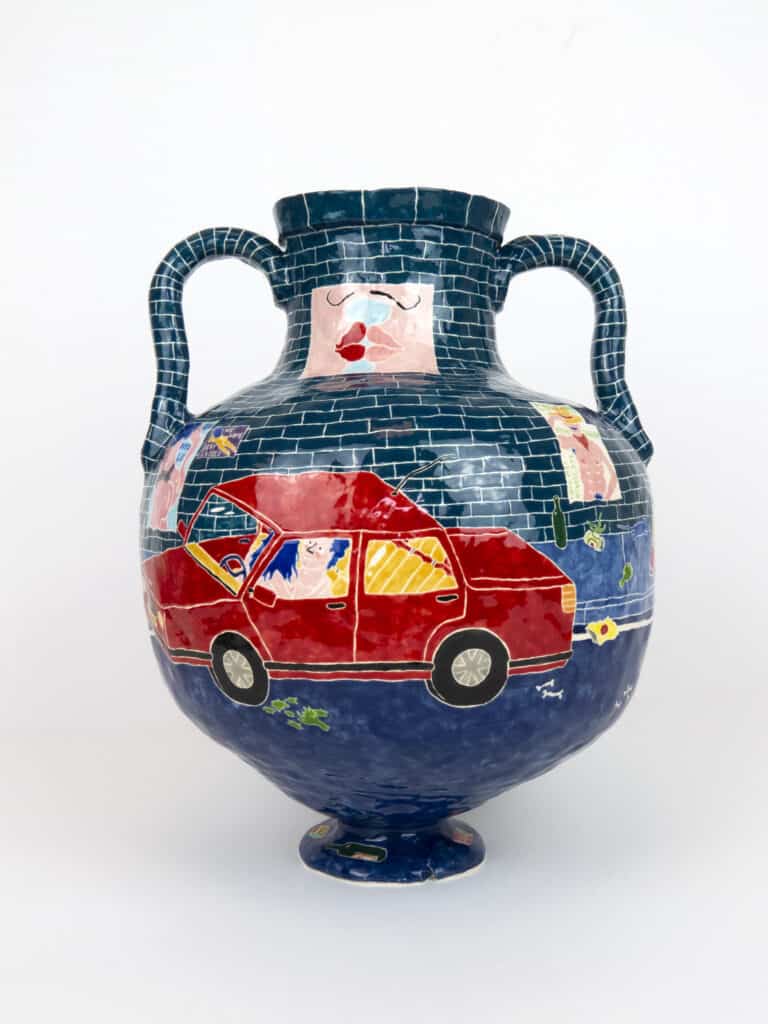
P.E.S: You occasionally paint in oils as well. When is it that a canvas and oil paint attract you, what does this particular medium help you achieve that clay cannot?
K.S: I love how instantaneous they are – compared to ceramics anyway. I tried them again during the pandemic part 1 and I found it so fun. It was very freeing and a nice antidote to some of the pressures of ceramics.
Oil paint can have a greater depth and subtlety in colour than what I can achieve in glaze. As much as I love the cartoon flatness and brightness of the glaze colours it is interesting to try and work with shadows and gradients.
I have lots of friends who are painters and sometimes I feel so jealous at how swiftly they can get their ideas out. And when they are finished there is no more stress, no waiting for a firing and all that can go wrong with that.
Sometimes it’s just nice to make something that is a bit harder to break. I would love to get better at painting as I have some ideas.
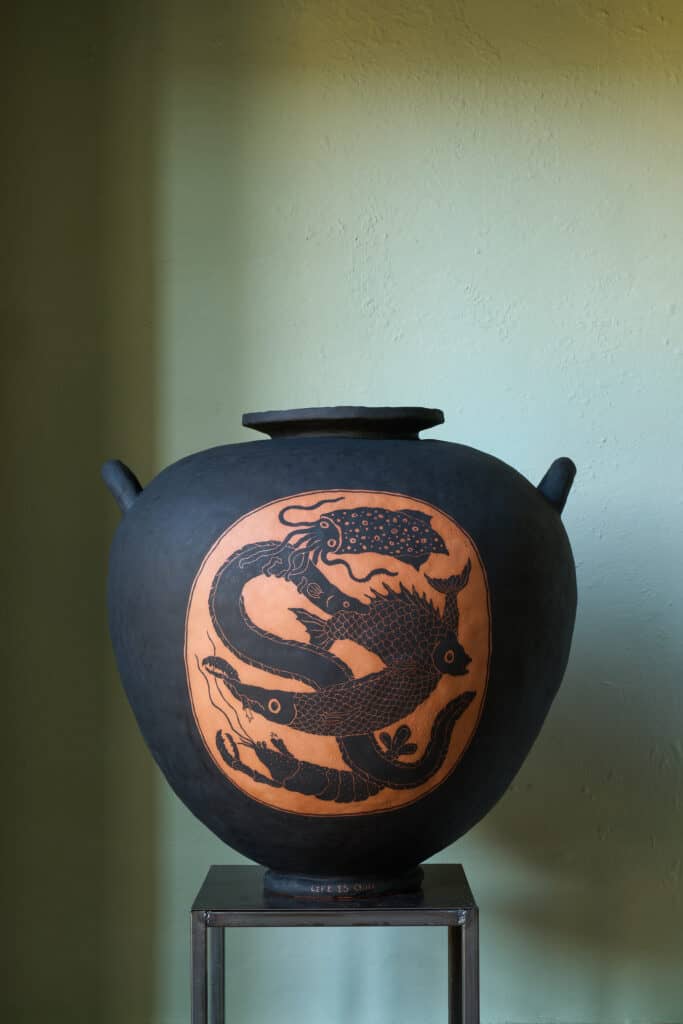
P.E.S: Can you share the philosophy behind your ceramic practice? Do you find it to be overarching concepts or projects based on your current interest?
K.S: I think underneath everything I do there are two main driving factors.
The first is how important the art of making things is to me. I enjoy pushing myself and I often think “I wonder how I can make this harder for myself.” Can it be bigger? Can it be made of more things? Can it balance precariously? How many tiny fragile things that might break can I attach to it? I love to make things that I know are going to be laborious. I like to think “Wow, that’s probably going to take me a really long time.”
My heart gets really excited when there is anything that is repetitive like painting individual fish scales or making 100’s of tiny flies. I used to work as a cookie icer, icing dozens of the same cookie all day and it really appealed to whatever it is inside that finds great comfort in repeating a process and trying to improve each time. Sometimes though it means I confuse goodness with how hard and time consuming it was to make. If something was really quick and I found it easy I often think that people will be able to see through me and know that I didn’t work so hard on it.
The second part is finding the funny side of human meanness.
P.E.S: I have been told that clay is a medium that has largely controllable results because of its malleability, but sometimes the color, glaze, and kiln process can take some control away from you. Do you lean into these ‘happy accidents’ or will you typically scrap and start again?
K.S: I love clay but it is a nightmare.
There are so many things that can go wrong and there are so many reasons why it did go wrong and in the end it’s basically a way of finding out a way to blame yourself. I don’t really lean into ‘happy accidents’ as I usually have a clear idea in my head about what I want, but I am now really good at mending things.
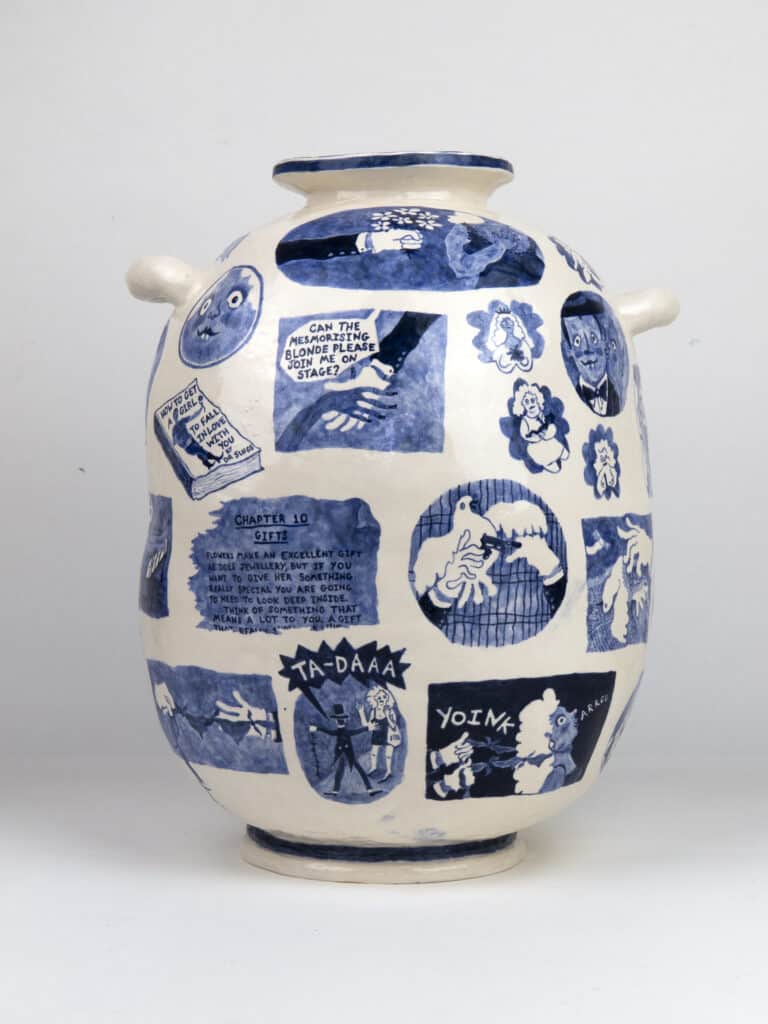
P.E.S: Some works nod to Greek amphorae, which were a main source for storytelling by illustrating narrative scenes of popular myths on vessels. Instead of myths, you are depicting life as you know it, news headlines, television programs, and firsthand social experiences. How does sometimes enlisting a classical vessel help communicate these contemporary ideas?
K.S: I have loved Ancient Greek art and pottery since school. And it has been a huge influence both on the themes of my work and the use of ceramic. I always really liked how the gods of Ancient Greece were so violent and loved to punish humans for any wrongdoing or acts of hubris.
One of my pieces ‘Don’t Wear Flip Flops’ is about the true story of a man who over confidently thought he could dip his body into the acidic hot springs at Yellowstone and ended up dissolved with only his flip flops left floating on the surface. I think it was a nice example of hubris being punished.
The classical forms, I hope, give my stories which are modern and relatively mundane about normal people or magicians a weight that they would not have. I guess it sort of continues the joke.
P.E.S: What is a story or a human condition you believe is a never-ending narrative in our society?
K.S: This is a very hard question, but revenge is always a good one and it comes in so many nice shapes and forms.
P.E.S: The Greek’s also used these stylized vessels for art purposes, but also to move and store goods, those being luxury and every day. Do you have any interest or future endeavors of creating vessels outside of a fine art context that could intentionally be used for utilitarian purposes such as to hold wine, water, flowers, perfumes, or cigarette butts?
K.S: Yes, definitely! I have been designing a full table service taking a lot of inspiration from 18th century trompe l’oeil serving dishes. I would love to have my work covered in real food. The only thing I am not too sure about is using my pots for flowers – I think maybe it’s just a bit too much and a bit too pretty.
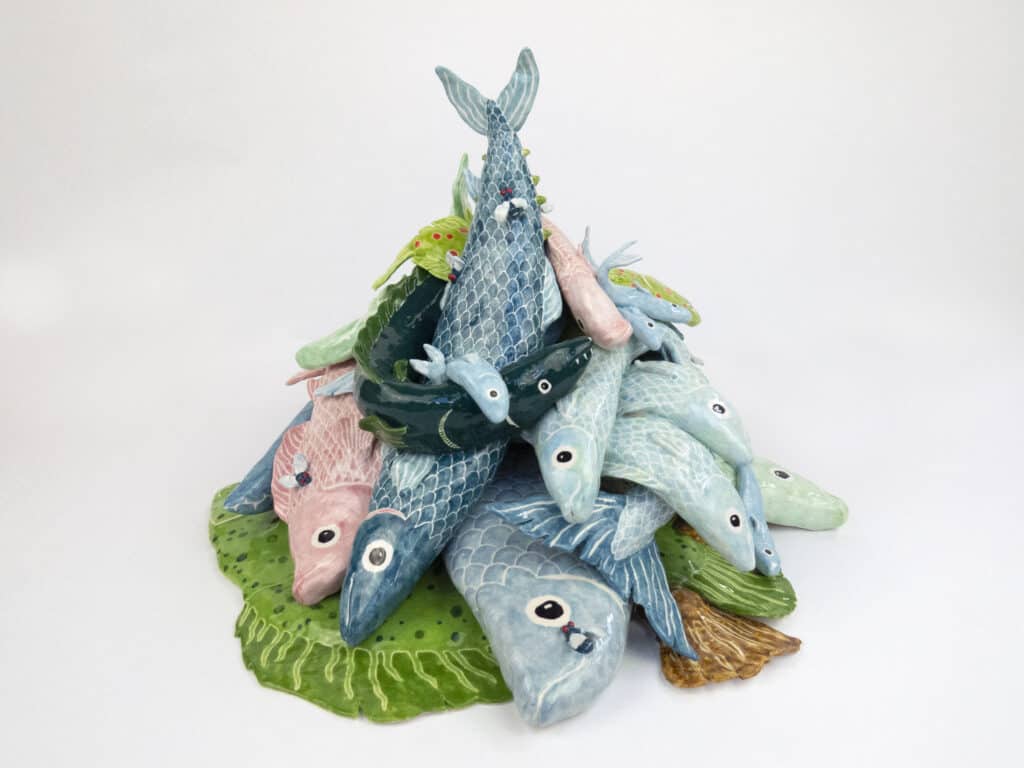
P.E.S: Ornate depictions of food are a recurring subject in your work. There are scraps piles, single plates, and towers reminiscent of a good time that was had, or a situation forgotten. What is your relationship with the culinary arts? Do you yourself make culinary concoctions daily or are there dishes that are probably best fashioned in ceramics than in the kitchen?
K.S: I have dreams of being a really good cook, but unfortunately my cooking is much better in ceramic form.
I am very interested in food and its preparation – especially meat and fish. I don’t eat them, but I have always been fascinated by the twisted ways you can display animals for food. I recently made a massive fish.
P.E.S: I imagine the time you spent in New York City for college at SVA, your time spent in Venice at your Alma Zevi residency, and time most recently spent in Brescia at the Palazzo Monti residency, altered your practice. It’s almost necessary to travel, but what is in London that inspires you that you cannot get anywhere else?
K.S: My studio has the low paneled ceiling of an office and it overlooks a flat roof with big air vents from a club underneath. Recently, a new building has gone up and blocked where I used to be able to see the sunset.
I think sometimes you need to be somewhere a bit ugly to have some fun ideas.
But the times I have spent in other countries have had a huge influence. New York will always be somewhere that was incredibly formative. I found it a really funny place and loved the rats. I was making really sad and quiet work before I got there but it got beaten out of me.
The two residencies I have been on were so exciting and I absolutely loved learning about the local food and the art. At Palazzo Monti it was amazing spending so much time with other artists (Michaela Yearwood-Dan and Sahara Longe) and learning so much about how they work. As well as being in such a beautiful city and palazzo.
Are there holidays that you are looking towards or wish to make in the future that may further inspire you and shift your way of making? If so, where?
I would love to go to China. Jingdezhen has been producing porcelain for over 1000 years! I think it would be fascinating – I would love to go when I am feeling a little richer so I can buy lots of things.
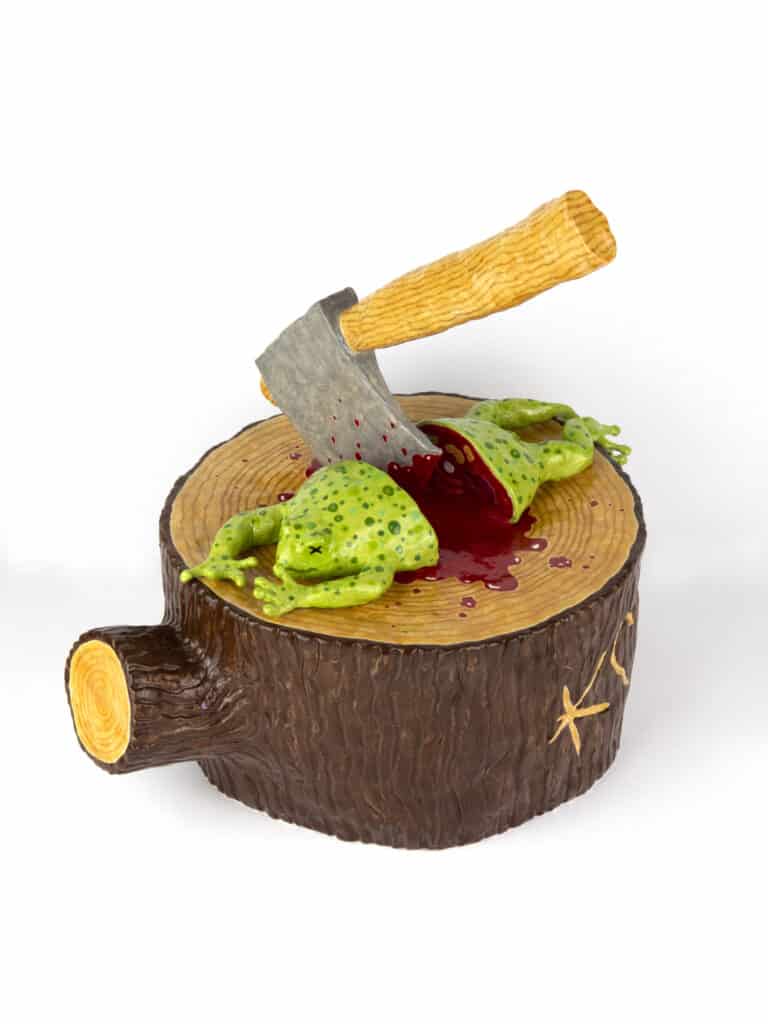
Can you share a recent fascination with a disgusting human trait or practice that you are mulling over?
I have been thinking a lot about funerals at the moment. I have this image of a hearse crashing into a tree and the coffin being shot out through the front window taking the driver’s head off with it. Gonna think about how best to tell that story.
Follow Katy Stubbs on Instagram at @katy.stubbs and learn more by visiting PATTERSON ZEVI

